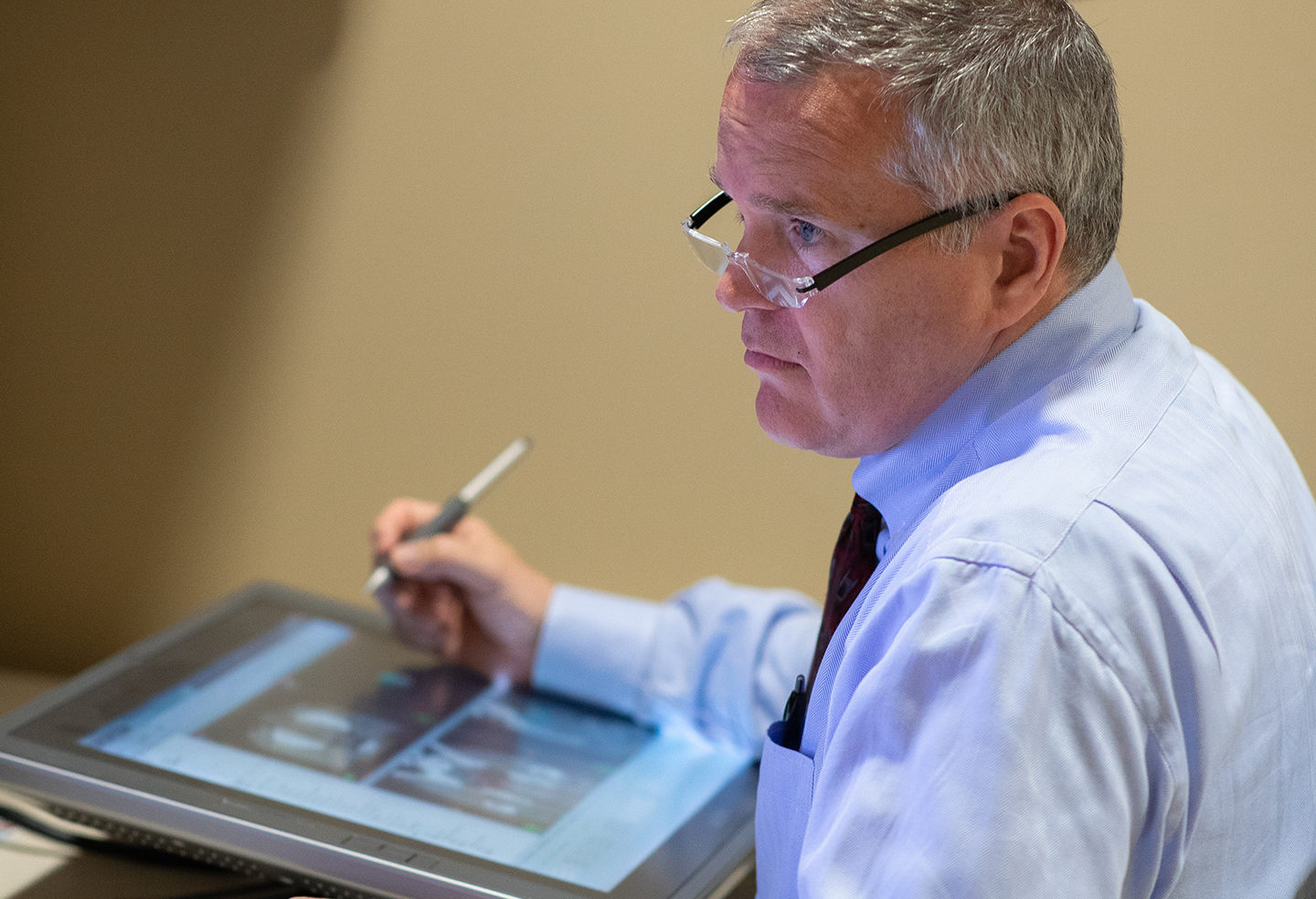Radiation therapy is the most common type of cancer treatment—around 60% of cancer patients have it as part of their treatment—and one of the most effective ways to treat many types of cancer in almost any part of the body. It’s also one of the most technologically-advanced weapons in the cancer-fighting arsenal, combining state-of-the-art imaging, high-energy physics, and medicine.
Radiation therapy is prescribed the same way any kind of medicine is, and it varies for each person. Radiation can be the sole treatment of cancer, or it can used in conjunction with surgery, or chemotherapy. It depends on the type of cancer.
Radiation can be administered externally or internally. At MRO, we use a machine called a linear accelerator to precisely target beams of X-rays and other types of radiation externally to kill cancer cells. You can’t feel being irradiated and it does not make you radioactive.

Dr. Ross Dickson, a board-certified MRO radiation oncologist at Mercy Specialty Center in Coon Rapids
Dr. Ross Dickson, a board-certified radiation oncologist at MRO Mercy, explains, “We can target radiation treatment to very small areas, size of a penny or smaller, or to bigger areas if we need to. It all depends on what we’re treating and what we’re trying to avoid.”
When internal radiation therapy is used, a radioactive implant is placed directly into a tumor or inserted into a body cavity. Sometimes, after a tumor has been removed by surgery, implants are put into the area around the incision to kill any cancer cells that may remain.
Even when curing the cancer is not possible, palliative radiation therapy can shrink tumors and reduce pressure, bleeding, pain, or other symptoms, so that patients are able to enjoy a better quality of life.
What’s the process?
Radiation therapy begins with a consultation with the MRO care team. The next step is a simulation: putting you in the appropriate position for the treatment and doing a CT scan. It’s a key to ensuring that you’re getting treatment in precisely the same area every time.
Dr. Dickson comments, “The CT imaging allows us to see exactly where the tumor is and target it down to the millimeter.” Radiation therapy is a localized treatment, so it only affects the cells in the area of the body actually being treated. Dr. Dickson stresses the point, “We make every effort to preserve as many healthy cells as possible.”
You have a whole team on your side.
At MRO, we build a treatment team of doctors, nurses, physicists, and therapists, and collaborate with your referring physicians. They’re all critical links to ensuring you get the appropriate care and support during your entire course of treatment.
You are an active participant in your own treatment. And as Dr. Dickson points out, “The number one thing that patients can do to improve the quality of their healthcare is to ask questions.”
Your MRO care team will work to help you understand what your diagnosis means, what your options are, what’s involved in that, including side effects. The goal is to provide the treatment that optimizes your results, while respecting your decisions.


